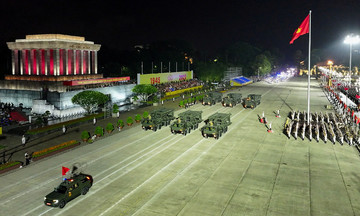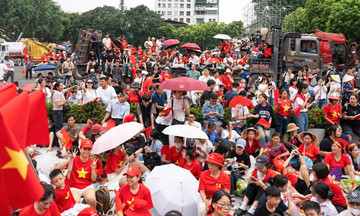The Ho Chi Minh City Institute for Development Studies (HIDS) has finalized a draft proposal for transitioning gasoline-powered motorbikes to electric ones for ride-hailing and delivery drivers. According to Le Thanh Hai, Director of the Center for Economic Consulting and Application (under HIDS), the transition roadmap is designed with mandatory technical milestones, accompanied by incentive policies to ensure drivers' financial benefits, promote the exchange of old vehicles, provide loans for new vehicles, and develop charging infrastructure.
From the beginning of 2026, drivers must use electric vehicles when registering with ride-hailing apps. At the same time, Ho Chi Minh City will begin a two-year transition process for existing vehicles. The city aims to transition 30% of vehicles by the end of 2026, 80% by 2027, and the remainder by 2028. From the beginning of 2029, gasoline-powered motorbikes will be completely banned in delivery and ride-hailing services.
To achieve this, the city will implement multiple programs and policies simultaneously, with multi-agency coordination. Ho Chi Minh City plans to establish low-emission zones where gasoline-powered vehicles will be banned during peak hours from 2027, and completely banned from 2028.
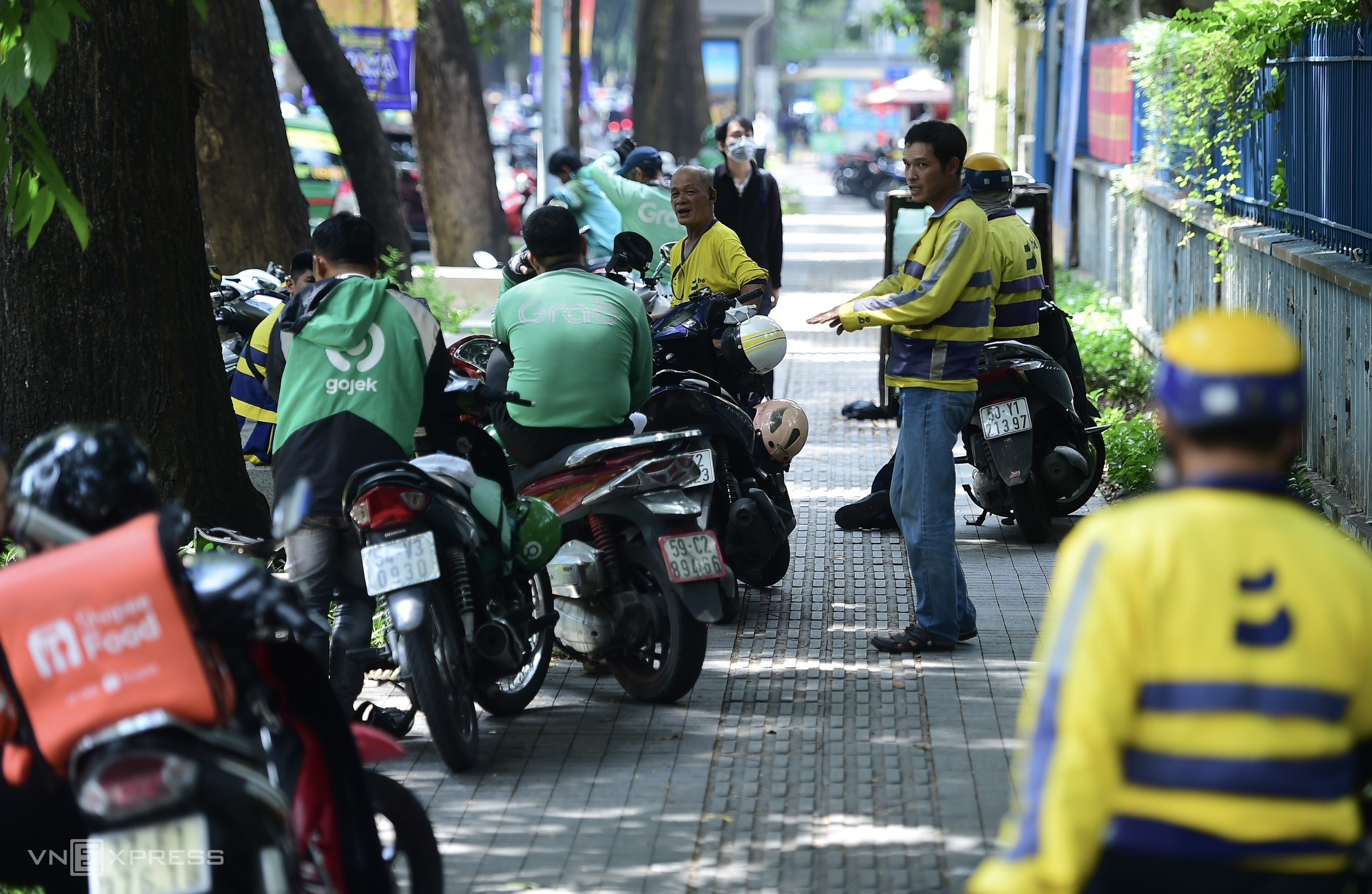 |
Ride-hailing drivers in downtown Ho Chi Minh City. Photo: Thanh Tung |
Ride-hailing drivers in downtown Ho Chi Minh City. Photo: Thanh Tung
Support policies will follow the principle of "early transition, more benefits". During the first two years, drivers who transition will receive at least a 2% interest rate subsidy on loans for electric vehicles, VAT exemption, and registration fee waivers. By the third year, the support level will decrease to 50%. The city also plans to allocate a budget to support the transition for tens of thousands of vehicles belonging to drivers in difficult and near-poor circumstances.
In addition to public policies, the project also encourages the participation of technology platform providers. These companies will promote the benefits of electric vehicles, award bonus points to drivers using electric vehicles, and encourage consumers to choose environmentally friendly services. For example, each electric vehicle trip could be rewarded with 500-1,000 VND, helping drivers improve their income and participate in the transition program.
The biggest concern with the transition to electric vehicles is the charging infrastructure. According to Hai, the entire city currently has about 50 battery swapping stations, and two more companies will soon invest in this system. Ho Chi Minh City is also developing policies to support businesses in developing mobile charging stations and rest stops.
An interdisciplinary team comprising the Department of Construction, the electricity sector, and fire prevention and fighting forces has been established to survey apartments and buildings to develop a map of electric vehicle charging points. The city will use this map to attract investment and enact appropriate policies. For boarding houses, authorities will strengthen electrical system inspections to ensure the safety of drivers using electric vehicles.
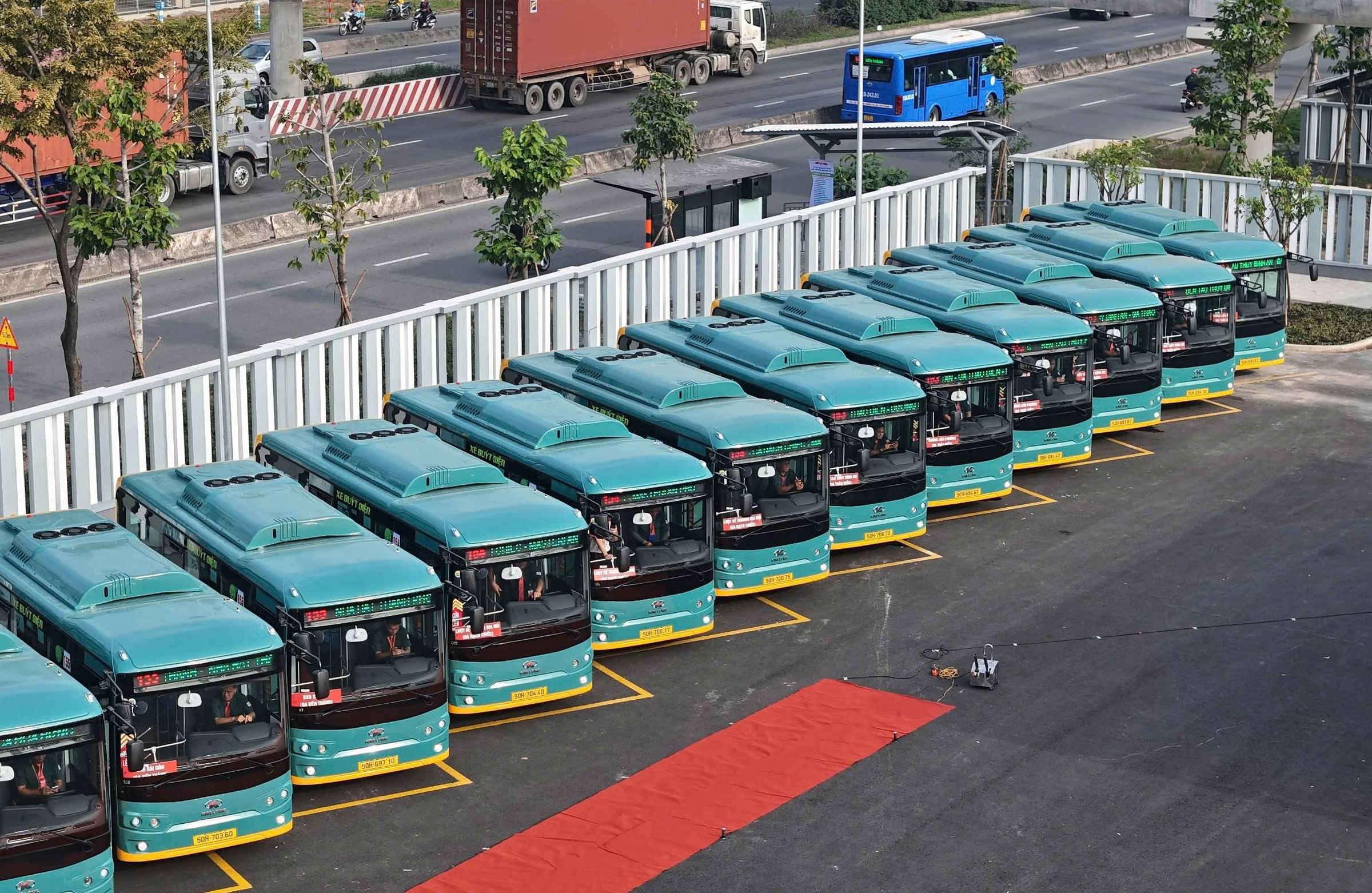 |
Electric buses connecting the Ben Thanh - Suoi Tien Metro line were put into operation at the end of 2024. Photo: Giang Anh |
Electric buses connecting the Ben Thanh - Suoi Tien Metro line were put into operation at the end of 2024. Photo: Giang Anh
According to Hai, the transition to electric vehicles is part of Ho Chi Minh City's emissions control program, implementing Directive 20 of the Prime Minister on urgent tasks in environmental protection. The city will propose decentralization and authorization to the central government for effective implementation. Regarding the budget, Ho Chi Minh City plans to offset the costs of incentives such as VAT exemption, fees, and interest rate support through revenue from selling carbon credits in this program.
Besides the plan to convert over 400,000 motorbikes, the Ho Chi Minh City Department of Construction is also seeking feedback from stakeholders on a plan to restrict gasoline and diesel vehicles in highly polluted areas. The feedback includes assessing the emission levels of current vehicles to establish new emission standards and criteria for limiting vehicles in areas with poor air quality.
The Department also proposes control solutions in conjunction with land policies to facilitate investment in parking lots and charging stations in the green transportation development roadmap. Related agencies are also required to research and control the production, import, and distribution of gasoline and diesel fuel to comply with the new emission standards in the city.
According to a representative of the Department of Construction, this is part of the Ho Chi Minh City Vehicle Emissions Control Project, which consists of two phases. Phase one has been completed with the issuance of policies supporting the transition of buses to green energy. The goal is to have all buses in the city using environmentally friendly energy by 2030.
With Ho Chi Minh City's recent merger with Binh Duong and Ba Ria - Vung Tau, the Department of Construction is coordinating with related units to assess the impact and propose synchronized implementation solutions across the new area. This plan is expected to be completed in Quarter III of this year.
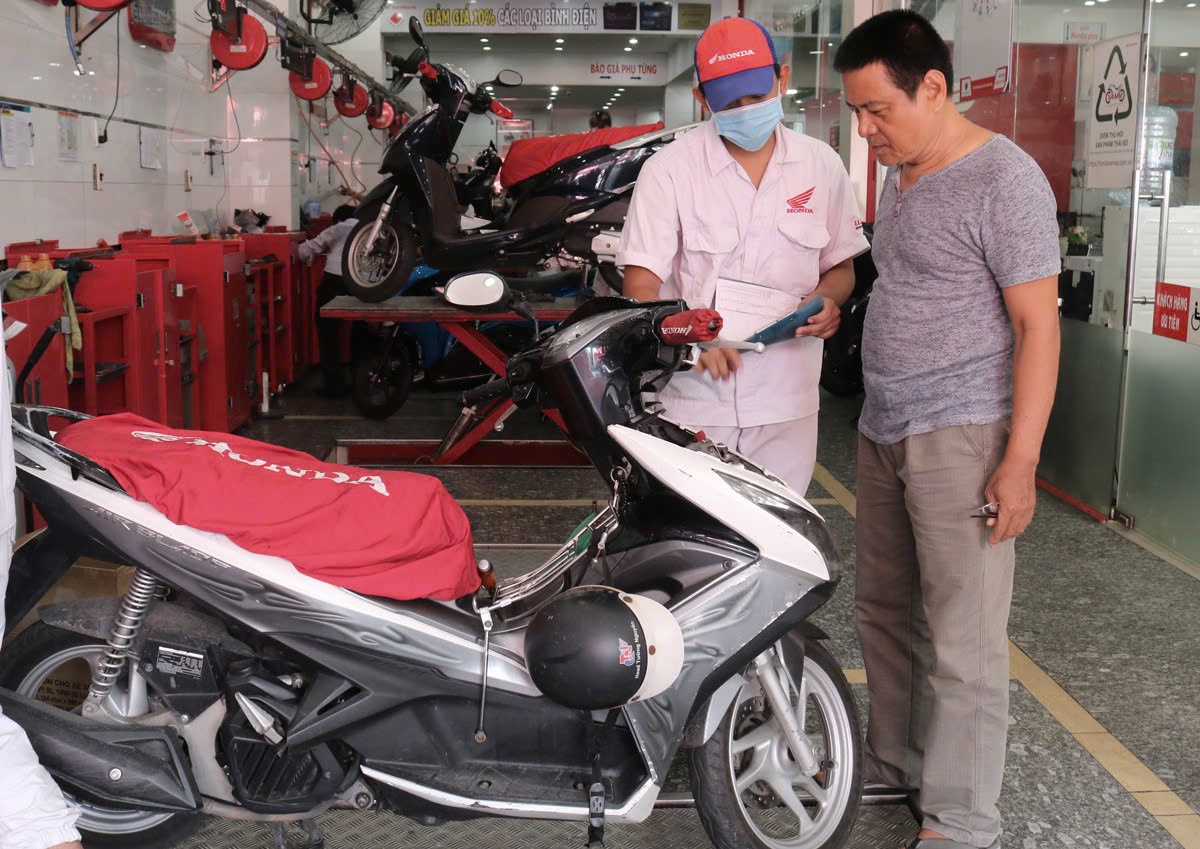 |
People get free emissions tests at a maintenance center as Ho Chi Minh City plans a pilot program for motorbike emissions control in 2020. Photo: Giang Anh |
People get free emissions tests at a maintenance center as Ho Chi Minh City plans a pilot program for motorbike emissions control in 2020. Photo: Giang Anh
For phase two, the consulting unit is developing a project for the entire Ho Chi Minh City after the merger, expected to be submitted to the City People's Committee and People's Council in Quarter IV/2025. The main content is developing incentive policies for individuals and businesses to transition from gasoline to electric vehicles, including purchasing old vehicles and supporting the exchange for new clean energy vehicles. The target group will be expanded to include various groups, from private cars to taxis and ride-hailing vehicles.
Concurrently, Ho Chi Minh City will also finalize traffic emission control solutions by 2030, with a vision to 2050. The city will divide areas for emission control, prioritize electric vehicles, and restrict gasoline and diesel vehicles in certain areas such as downtown Ho Chi Minh City, Can Gio district, and Con Dao. The criteria and implementation sequence will be announced along with synchronized policies.
As of 6/2025, Ho Chi Minh City manages over 9.6 million vehicles, including over one million cars and nearly 8.6 million motorbikes, not to mention a large number of transient vehicles. Compared to the same period last year, the number of vehicles increased by 3%, with cars increasing by 9%, putting significant pressure on urban infrastructure and the environment.
According to the Department of Transportation (now the Department of Construction), CO (Carbon monoxide) and HC (Hydrocarbon), which are harmful to health, emitted from motorbikes currently account for 90% of all motor vehicles in the city. The project calculates that with control measures, the city will reduce over 56,000 tons of CO and 4,400 tons of HC emissions annually.
The requirement to control emissions from vehicles has been set by the government since 2010 when the Prime Minister approved the motorbike emission control project in Hanoi and Ho Chi Minh City. However, after over 10 years, the program has not been effectively implemented, mainly due to the lack of a legal framework.
In 2020, the Ho Chi Minh City Department of Transportation developed a pilot project for motorbike emission control, organizing free inspections at many maintenance dealerships, with the goal of establishing a specific roadmap from the city center to the entire city. However, the project was paused after the new Law on Environmental Protection was issued to adjust for a more comprehensive and synchronized approach.
Le Tuyet - Giang Anh




